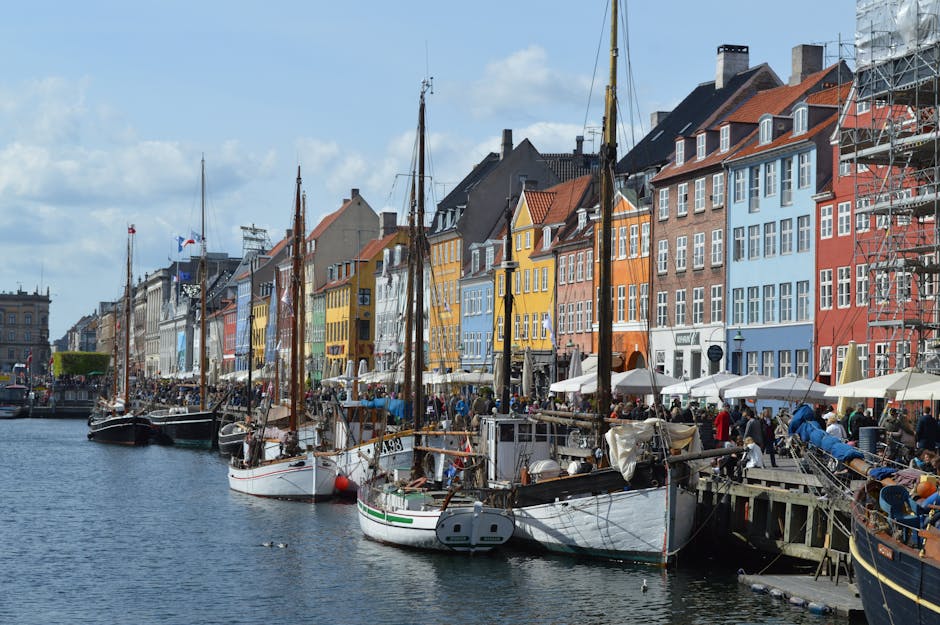The global redistribution of alien species, i.e. species originally not native in a specific geographic region, is closely linked to human movement which accelerated with the onset of European exploration and colonialism in the late 15th century. Back then, European powers introduced species mainly for economic reasons in order to ensure the survival of their population and to foster the establishment of settlements, next to aesthetic and nostalgic reasons. In particular, many plant species were introduced to and from the colonized regions for food, fodder or horticulture and have over time established alien floras in these region.
THE LONGER A REGION WAS OCCUPIED BY AN EMPIRE, THE MORE SIMILAR THE ALIEN FLORAS
“The European empires restrictive trade policies ensured that plants were predominantly traded between regions occupied by the same power. Hence, the set of species exchanged between regions was restricted to the extent of the empire and consequently the regions became more similar in their floras compared to outside regions a process that intensified with the length of time a region was occupied by the empire”, says Bernd Lenzner, the lead author of the study. The study shows that this process is equally important as other drivers of the spread of alien species, such as socio-economic development or population density in a region, that explain how alien plant species are distributed today.
STRATEGIC AND ECONOMIC IMPORTANCE OF A REGION INCREASE FLORISTIC SIMILARITY
Furthermore, regions that played an important economic or strategic role in the empires show even greater similarity in their alien floras compared to all other regions of an empire. Such regions include for example former trade hubs like regions in the Indo-Malay Archipelago that were crucial for the international spice trade. Similarly, this also applies to islands like the Azores or St. Helena that were both important stopover destinations on long trans-oceanic voyages. The researchers state that dependencies based on historic European empires prevail to this day, manifested for example in the existence of overseas territories or common languages between regions of the world that still shape preferential trade and hence exchange of alien plant species.
THE FULL IMPACT OF HUMAN ACTIONS ON ALIEN FLORAS WILL ONLY BE OBSERVED IN THE FUTURE
The scientists emphasize that understanding the past is important to draw lessons for the future: “We knew that it may take decades for alien species to establish and spread within a region they have been introduced to and that this process often unfolds with a substantial delay”, says Franz Essl, senior author of the study. He adds: “However, it is remarkable to be able to detect such legacies after several decades, sometimes even centuries, after the collapse of European empires. This shows that we need to be very careful and aware of which species we move around the globe, as they will likely have lasting impacts on biodiversity and human livelihoods far into the future”.
Publication in “Nature Ecology and Evolution”:
Lenzner, B., et al. Naturalized alien floras still carry the legacy of European colonialism. Nature Ecology and Evolution, 2022. DOI: 10.1038/s41559-022-01865-1
Scientific contacts
Dr. Bernd Lenzner
Bioinvasions, Global Change, Macroecology Group
Department für Botanik und Biodiversitätsforschung
Universität Wien
1030 Wien, Rennweg 14/1
T +43-680-327-8884
E bernd.lenzner ( @ ) univie dot ac dot at
Assoz.-Prof. Mag. Dr. Franz Essl
Bioinvasions, Global Change, Macroecology Group
Department für Botanik und Biodiversitätsforschung
Universität Wien
1030 Wien, Rennweg 14/1
T +43-676-609-1638
E franz.essl ( @ ) univie dot ac dot at
Press contact:
Theresa Bittermann
Media Relations, University of Vienna
Universitätsring 1, 1010 Vienna
T +43-1-4277-17541
E theresa.bittermann ( @ ) univie dot ac dot at
W www.univie.ac.at
International Distribution
Dr. Barbara Bauder
PR&D Public Relations for Research & Education
Kollersteig 68, 3400 Klosterneuburg
M +43-664-1576-350
E bauder ( @ ) prd dot at
W www.prd.at
Fig. 1: Black Locust (Robinia pseudocacia) is a tree native to North America that has been introduced in all continents. European empires have often played a major role in its introduction and spread. (C: Franz Essl)
View on the media portal (online from 17h CEST): https://medienportal.univie.ac.at/en/media/recent-press-releases/detailansicht-en/artikel/european-colonial-legacy-is-still-visible-in-todays-alien-floras/
Photo Download: https://medienportal.univie.ac.at/uploads/tx_univiemedienportal/zip/38081/images.zip
genuinely curious. Since 1365.
The University of Vienna is one of the oldest and largest universities in Europe. This makes the Universi-ty of Vienna Austrias largest research and education institution: Around 7,500 interconnected academics work at 20 faculties and centres on new solutions, thus contributing significantly to the further devel-opment of society. The University of Vienna cooperates with the business world, culture and society. The aim of discovering innovations with genuine curiosity unites researchers, students and lecturers. Approximately 10,000 students graduate from one of the University of Viennas 184 degree pro-grammes every year. The University prepares them for a professional career and encourages critical thinking and self-determined decision-making.
UNIVERSITÄT WIEN | Universitätsring 1 | 1010 Wien | T +43-1-4277-0 | www.univie.ac.at
###

